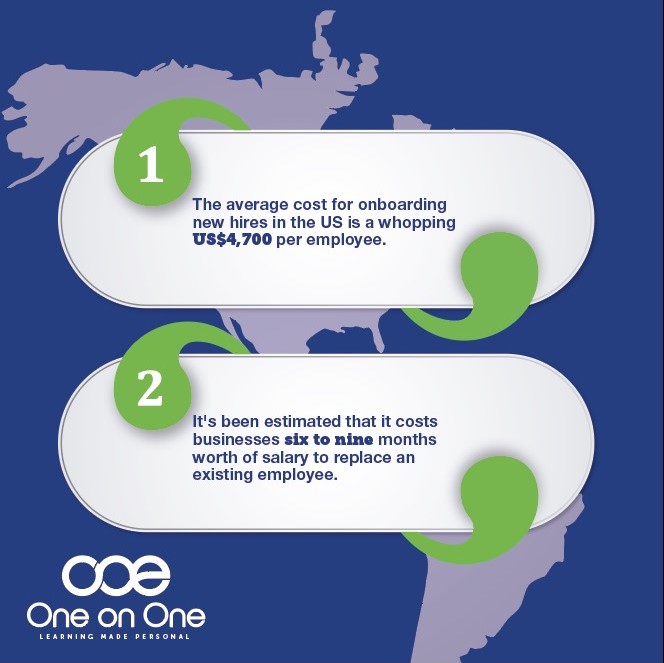Employee Cross-Boarding: How To Effectively Onboard Existing Employees Into New Roles
Vacancies are either filled externally or internally. Cross-boarding facilitates the process of internal hiring. When done well, cross-boarding leads to loyal and more engaged employees.
Yet, there are companies that shy away from internal hiring. This resistance is often linked to one or more of these factors:
Leaders not being fully aware of their team’s capabilities across the company
Managers not wanting to release crucial team members for fear of knowledge gaps being created
Lack of a workplace culture that supports internal mobility
Change is necessary. Embracing internal mobility and cross-boarding is one of many things that helps you empower employees to deliver their best work.
In this article, we’re looking closely at what employee cross-boarding is and how you can make training an important part of the process.
What is employee cross-boarding?
Employee cross-boarding is the process of providing existing employees with the resources, support, and training needed for them to transition into new roles within an organisation. It’s a multi-faceted process that involves:
Identifying the right employees for vacant roles
Providing the orientation necessary for them to understand their new roles, become acquainted with new team members, and adjust to the processes associated with the role
Providing ongoing mentorship and training so each employee can succeed
Cross-boarding vs onboarding: What’s the difference?
Cross-boarding is specific to existing employees. Onboarding is specific to new hires. Existing employees would already have a good sense of company culture and the way the company works. New hires have to be taught these things during their onboarding process. This often means that the onboarding process takes longer than cross-boarding.
Benefits of cross-boarding
Employee cross-boarding has three key benefits.
1. Reduced costs
Employee onboarding costs differ from one organisation to the next. But there are some common costs including:
Administration
Loss of productivity during the onboarding process
Office space setup if new hires are working remotely
Training and support
In fact, the average cost for onboarding new hires in the US is a whopping US$4,700 per employee. Also, it’s been estimated that it costs businesses six to nine months worth of salary to replace an existing employee. All parts of the hiring process for new employees, including onboarding, are costly.

The costs are much less when cross-boarding existing employees primarily because the process takes less time. Also, there aren’t any additional setup fees depending on the role.
The biggest cross-boarding costs usually come from industry-specific training that helps employees upgrade their skills. But these are costs worth bearing since there are many benefits to upskilling employees including:
Developing your employees’ skills which ultimately leads to a globally ready workforce
Learning new technology and managing change
Unlocking new opportunities for a business
2. Increased productivity
It takes at least a year for new hires to reach their peak productivity. According to Gallup, this is the result of new hires needing time to “shadow colleagues, master workflows, and collaborate with key players.” Existing employees have a better grasp of key areas of the business and will, therefore, reach peak productivity faster.
3. Stronger employee engagement and retention
Research shows that 62% of business leaders admit that employees leave their companies to take on roles that could have been offered internally. Insufficient support for internal mobility leads to employee retention issues. Cross-boarding is a big part of the internal mobility process.
The LinkedIn Workplace Learning report also reveals that employees who move into new jobs internally are 3.5x more likely to be engaged employees than those who stay in their current jobs. Employee cross-boarding supports employee engagement.
Training and employee cross-boarding
You’ll need a training schedule during the cross-boarding process. Employees taking on new roles within your company need to learn (amongst other things):
How to handle role-specific tasks
Team dynamics if they’re moving into a new team
The intricacies of whatever software they need to perform their duties
Department-specific processes and procedures
Your cross-boarding training plan should include:
The people responsible for the training
A training needs assessment so that the training you provide specifically matches the employee’s needs
The medium that will be used for training (a hybrid approach is typically the best option)
A platform for tracking training performance
Tactics for checking on the progress of the employee
Mentorship for the employee
Opportunities for the employee to provide feedback on the process so you can improve
One on One’s Learning Management System allows you to seamlessly provide on-demand online training to your employees. Our platform also gives you data you can track to further improve your employee training.
Reap the rewards of an effective employee cross-boarding process
Cross-boarding helps existing employees thrive in new roles within your company. Finding the best employees to fill vacancies is part of the process. But there should also be opportunities for these employees to get the training they need to thrive.
One on One’s LMS provides the online employee training solution you need to prepare existing employees for their new roles. Learn more about what our platform can do for you by scheduling a consultation.

